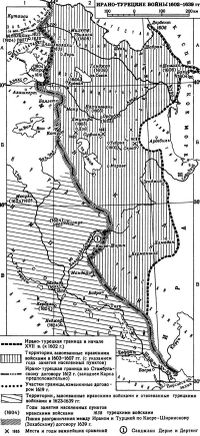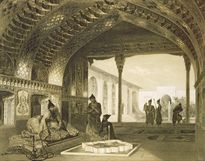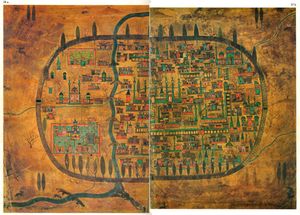الحرب الصفوية العثمانية (1603–1618)
| ||||||||||||||||||||||
الحرب العثمانية الصفوية، كانت حرب بين الدولة الصفوية بقيادة الشاه عباس الأول والدولة العثمانية تحت قيادة السلطان أحمد بدأت عام 1603 وانتهت بانتصار الصفويين عام 1618.
الهجوم الصفوي والنجاحات المبكرة (1603-1604)
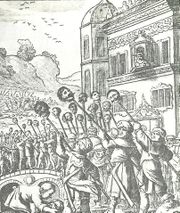
As a result of the Ottoman–Safavid War (1578–90) the Ottomans effectively came to rule over Azerbaijan and the Caucasus as far as the Caspian Sea.[1]
Abbas I had recently undertaken a major reform of the Safavid army through the English gentleman of fortune Robert Shirley and the shah's favorite ghulam and chancellor اللهوردي خان.
When Abbas I decided to attack on Ottomans to recover the large territories lost in the previous war, the Ottomans were engaged heavily in the European front due to the الحرب التركية الطويلة started in 1593. Furthermore, the Ottomans were troubled in Eastern Anatolia because of the Jelali revolts, the Karayazıcı rebellion (1598-1602) being the most destructive one.[2] Istanbul, the capital of the Ottoman Empire was also in turmoil in the beginning of 1603 as the tension between the Janissaries and the Sipahis were only to be eased temporarily with the intervention of the Palace.
هجوم مضاد فاشل من العثمانيين (1604-1605)
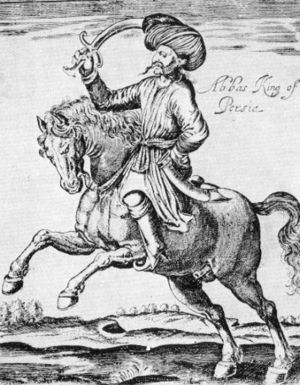
العثمانيون يركزون على الجبهتين الغربية والداخلية (1605-1609)
The Ottomans focused on the western front and the successful campaign of 1605 against the Holy Roman Empire under the command of Grand Vizier Sokolluzade Lala Mehmed Pasha ameliorated the situation in Hungary, which paved the way to the Peace of Zsitvatorok in 1606. Ahmed I appointed Lala Mehmed Pasha as the commander of the eastern front who died suddenly on 25 June 1606.
اندلاع الحرب مرة أخرى (1615-1618)
The Ottomans decided to go on war again in 1615. Grand Vizier Öküz Mehmed Pasha was appointed as the commander who postponed the envisaged campaign to 1616. This inaction gave the Safavids sufficient time to reinforce the border strongholds. The Safavid emissary to Istanbul returned to Iran with empty hands.
انظر أيضاً
الهامش
المصادر
- Blow, David (2009). Shah Abbas: The Ruthless King Who became an Iranian Legend. London, UK: I. B. Tauris & Co. Ltd. ISBN 978-1-84511-989-8. LCCN 2009464064.
{{cite book}}: Invalid|ref=harv(help) - Matthee, Rudi (2011). Persia in Crisis: Safavid Decline and the Fall of Isfahan. I.B.Tauris. pp. 1–371. ISBN 0857731815.
{{cite book}}: Invalid|ref=harv(help) - Parizi, Mohammad-Ebrahim Bastani (2000). "GANJ-ʿALĪ KHAN". Encyclopaedia Iranica, Vol. X, Fasc. 3. pp. 284–285.
{{cite encyclopedia}}: Invalid|ref=harv(help) - Roemer, H.R. (1986). "The Safavid period". The Cambridge History of Iran, Volume 5: The Timurid and Safavid periods. Cambridge: Cambridge University Press. pp. 189–351. ISBN 9780521200943.
{{cite book}}: Invalid|ref=harv(help) - Conflict and Conquest in the Islamic World, A Historical Encyclopedia, volume 1, page 699.
